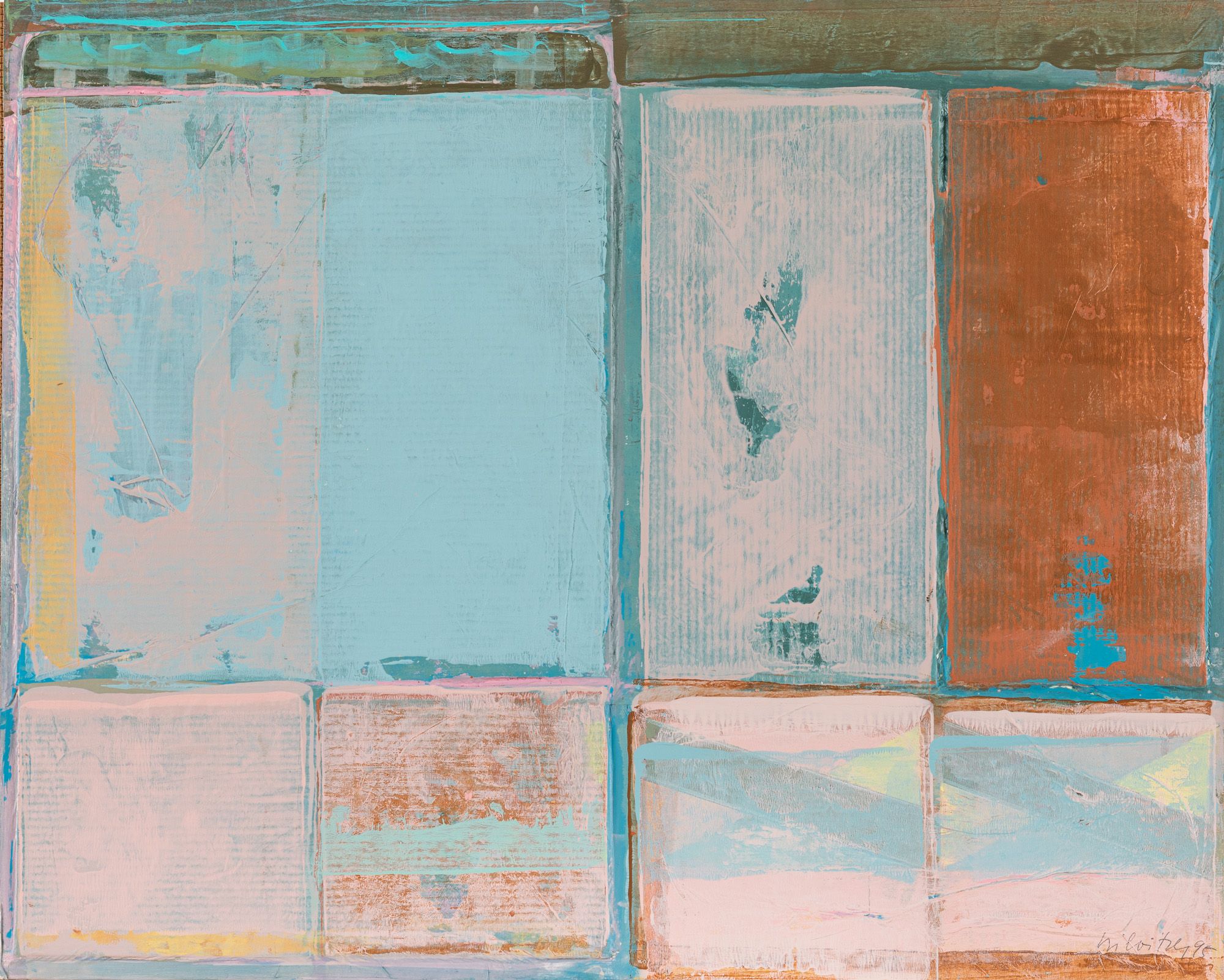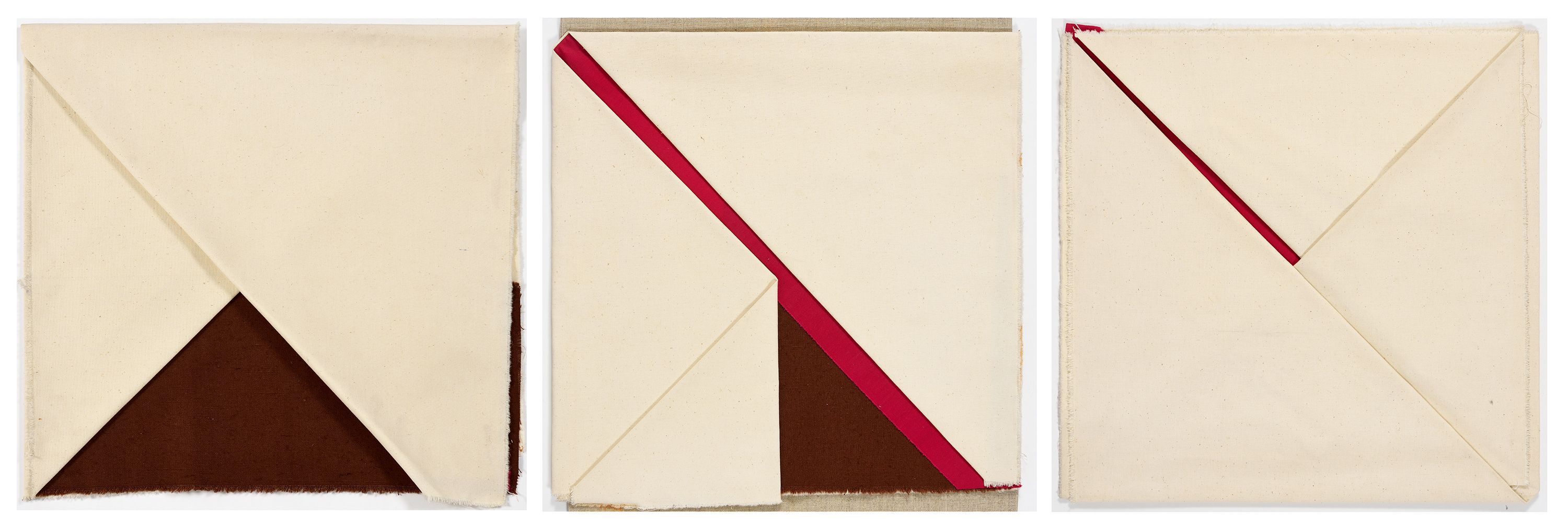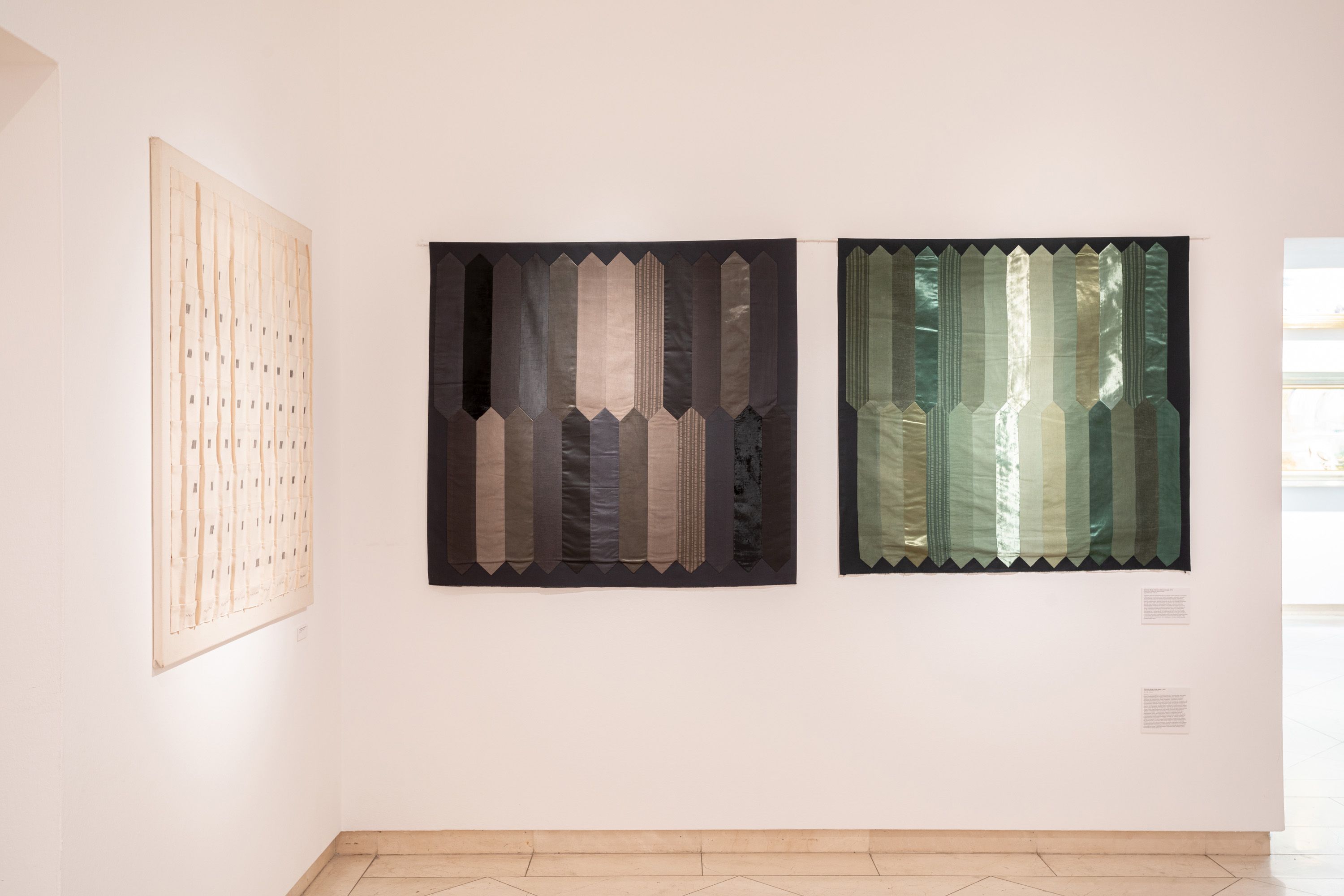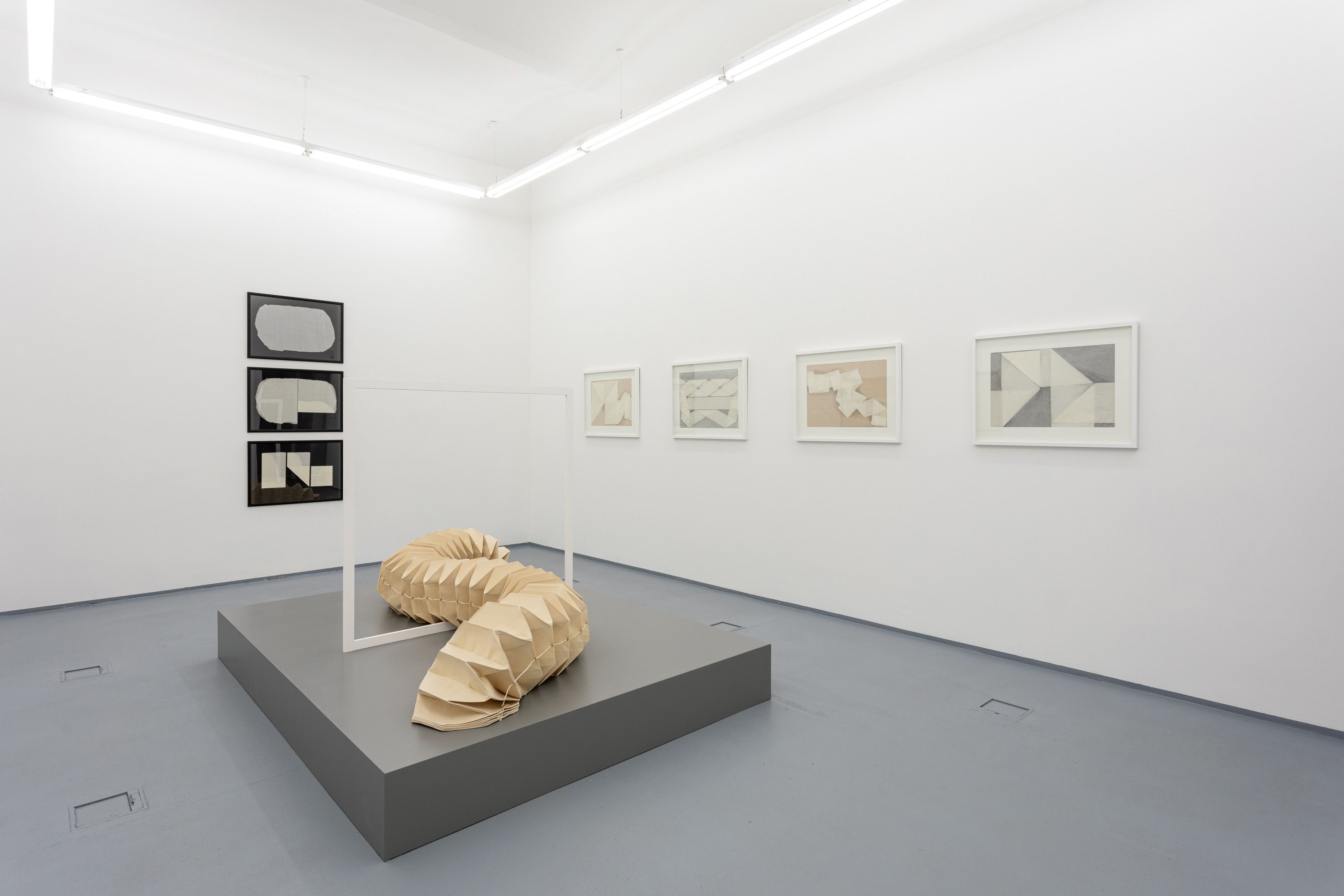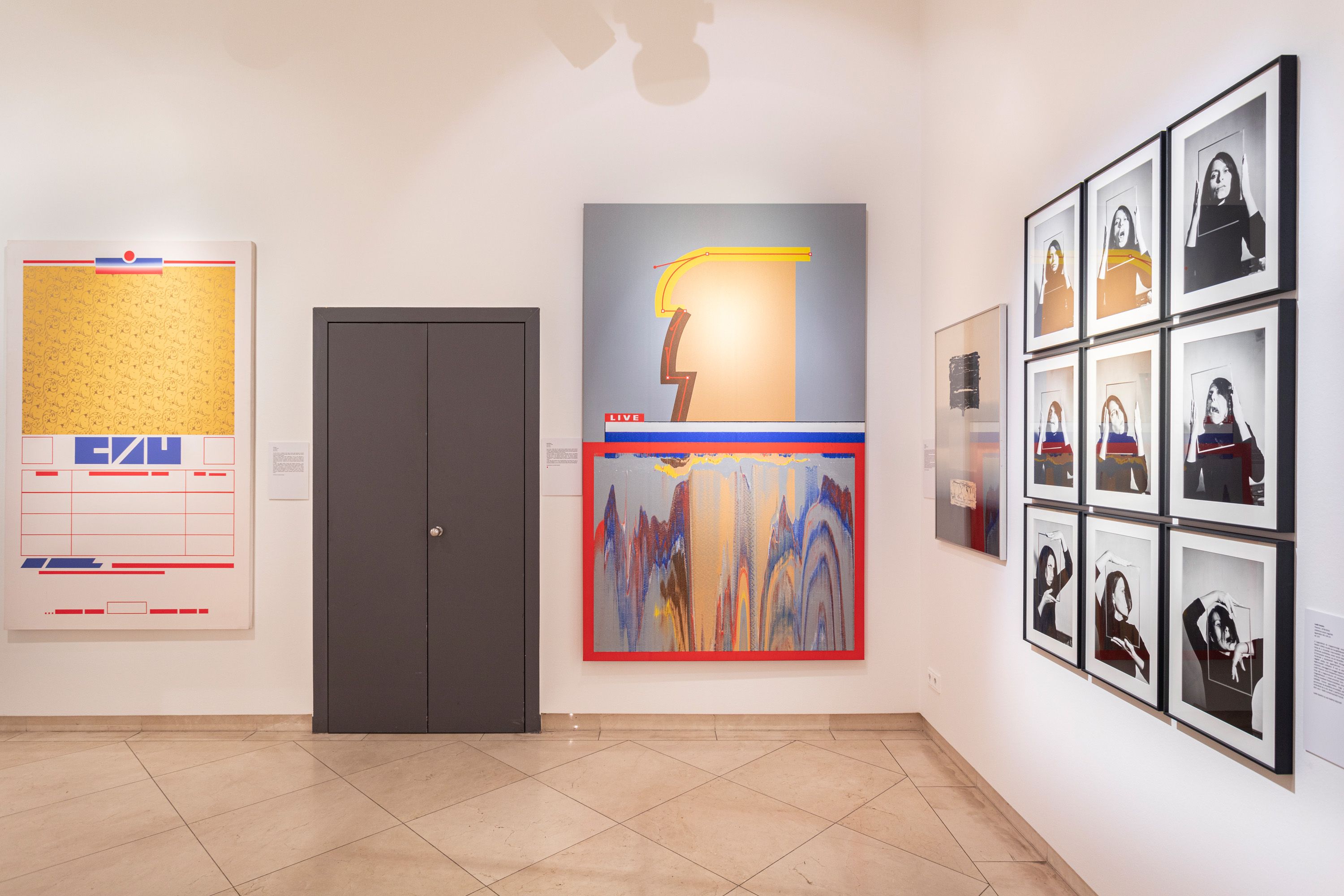Margit Szilvitzky
Cardboard Box Images
| Venue: | acb Attachment |
| Date: | Nov 04 – Dec 09, 2022 |
Description
In Margit Szilvitzky’s art, the gesture of folding takes centre stage. Her box images– which she first began creating in the mid-nineties – through the motif of unfolding, simultaneously reflect on constructivism and related painting tendencies, as well as on the genres of minimal art. While Szilvitzky’s name is primarily associated with the experimental textile art that had its heyday in the seventies, her body of paintings, along with her paper works that accompanied her career, also comprises an integral part of her oeuvre.
In her box images, the geometric articulation created by unfolding the cardboard box – a typical everyday accessory – is enriched by the rhythm of layered colour fields. The simplicity of the image structure arising from the former function of this three-dimensional utilitarian object, along with the pictorial balance created by the artistic rearrangement and the colour proportions, lends these works an intellectual character. In the mid-seventies, Szilvitzky turned her attention (in addition to other basic geometric shapes) to the square as “Malevichian” pure form and developed her technique of folding, influenced by Josef Albers’ paper studies. It was her vibrantly colourful canvas pictures, created in the eighties, that led her from the genre of spatial textile art ̶ where, following the nature of the material, she created sculptural spatial bodies – to unfolding paper and three-dimensional bodies onto the two-dimensional plane, thereby creating her box pictures. The exhibition entitled Cardboard Box Images on view at acb Attachment showcases a selection of the artist’s paper works and paintings from the nineties and the two-thousands.
Margit Szilvitzky’s oeuvre is segmented by changes of medium and shifts in perspective, which make for the profile of a diverse artist who also produced a significant body of theoretical work. Having graduated from the Academy of Applied Arts, she worked as a fashion designer before she – as a Hungarian pioneer of autonomous textile art – began to experiment with textile. As an organic development following from her experiences in textile art, Szilvitzky, in her search for new directions, turned to painting in the late eighties. Drawing, collage and experimentation with materials remained defining elements throughout her oeuvre. She was a regular participant in international exhibitions of Hungarian textile/fibre art, and she also took part in several graphic and artists’ book shows. She held solo appearances in Helsinki, Rome, at Műcsarnok/Kunsthalle Budapest, at the King St. Stephen Museum of Székesfehérvár and at the Gallery of Szombathely, among other venues. She was a recipient of the titles of Artist of Merit and Artist of Excellence, as well as the Order of Merit of the Hungarian Republic.
